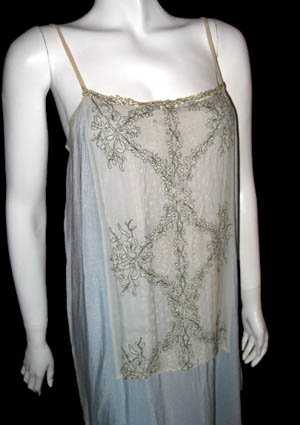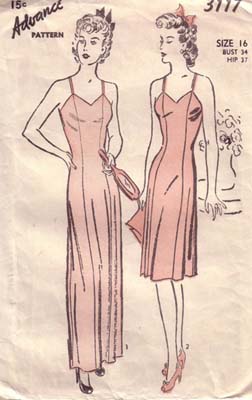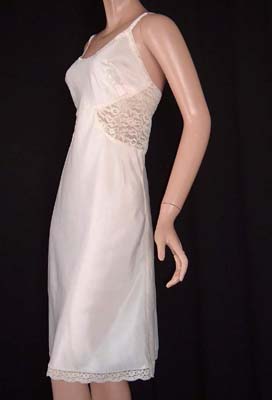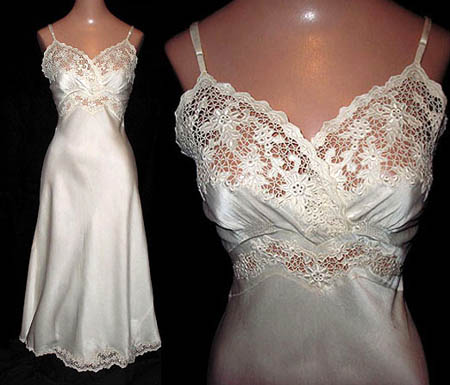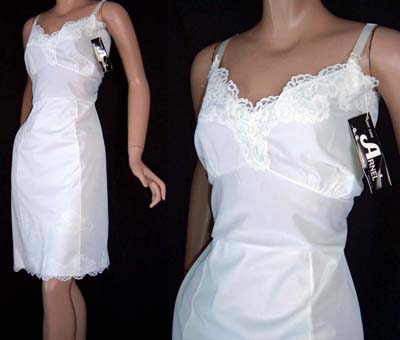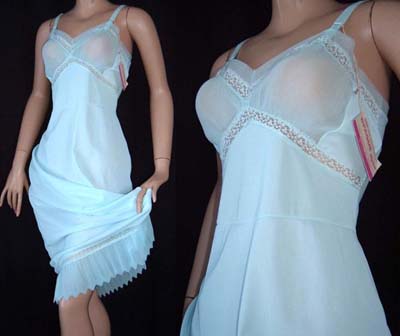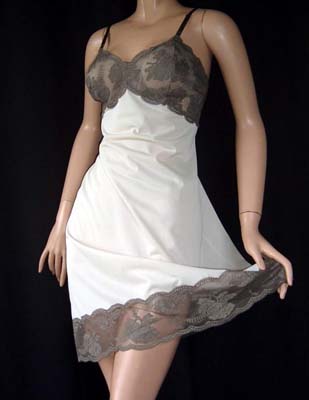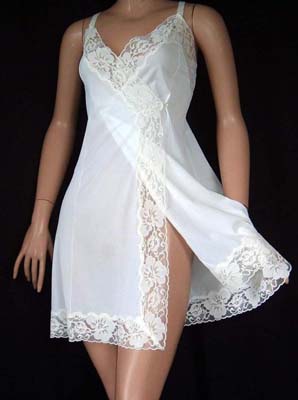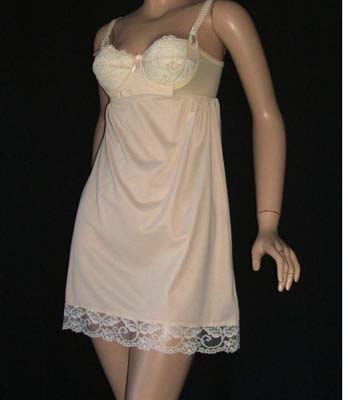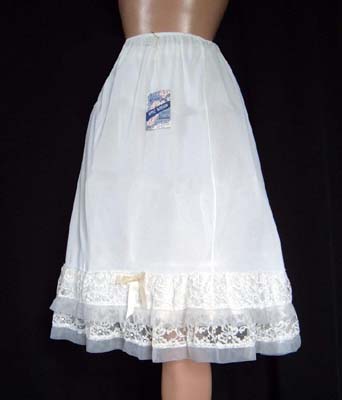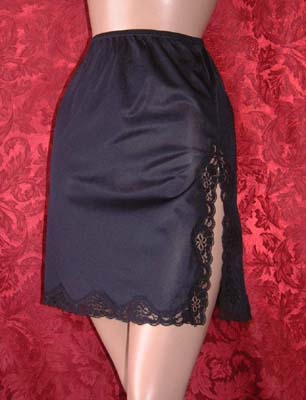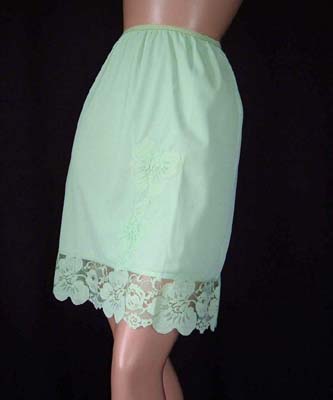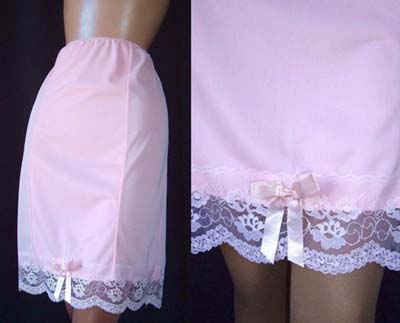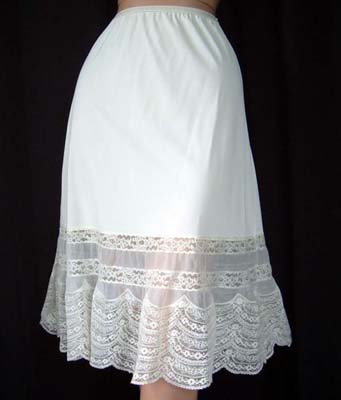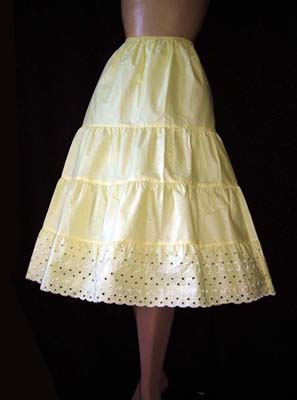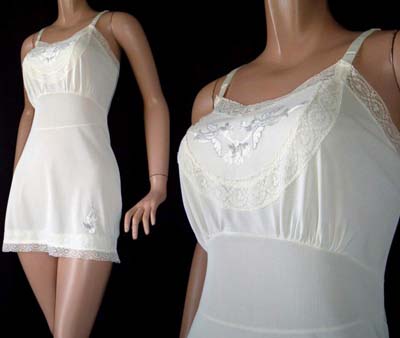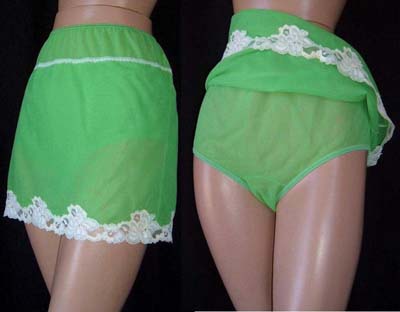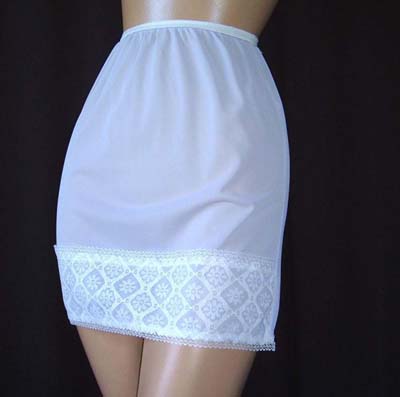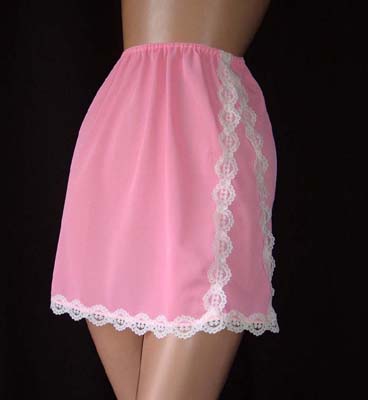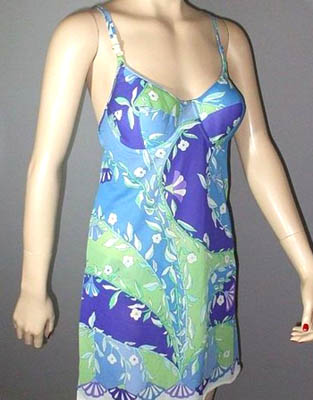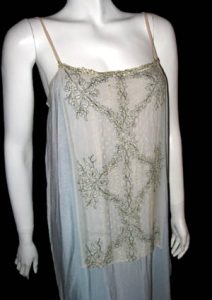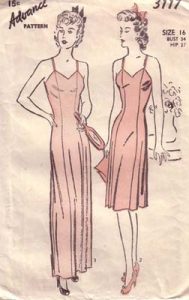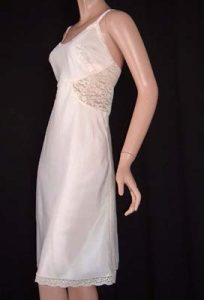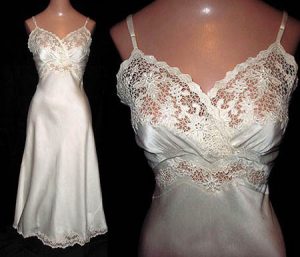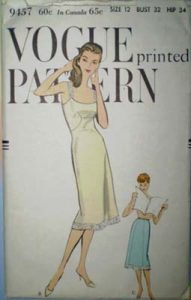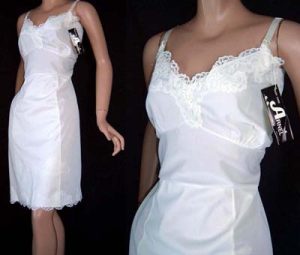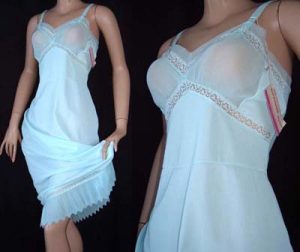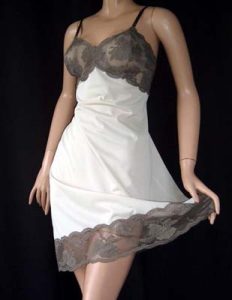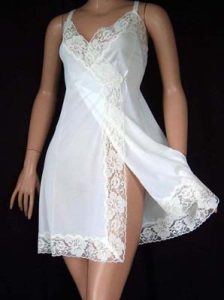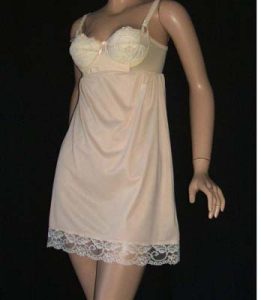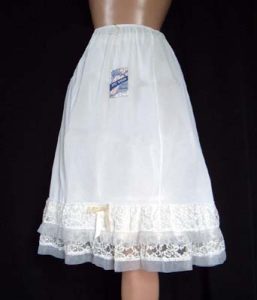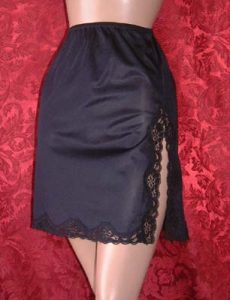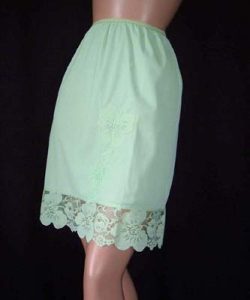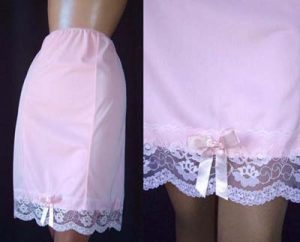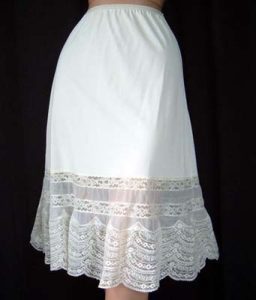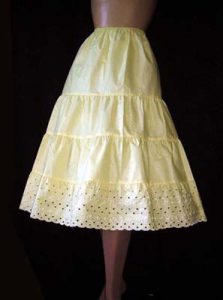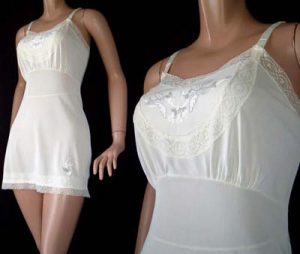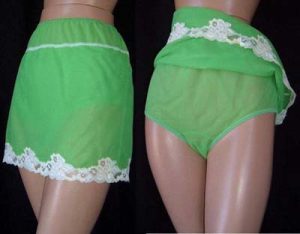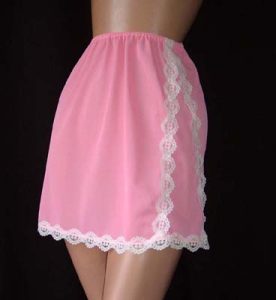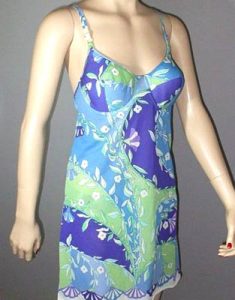Slips, the successor to the Edwardian princess line petticoat and the chemise.
From the late teens to early 1920s, the slip is a lightweight undergarment worn over the foundation garment or bra and panties and seen in silk, cotton, rayon, nylon, and tricot.
The slip is usually made with narrow straps and covering the body from the bust to the fashionable hem length and was often made in taffeta or satin and in matching colors for sheer dresses. Basic tones of white, beige and black with lace trim were most common. Red was seen as a ‘racy’. choice.
In the 1920s the fit is tubular and loose, and the slip is rarely trimmed.
In the 1930s, slips were often bias cut and usually plain in appearance.
By the 1940s and 1950s the bust is defined and more likely to be trimmed with a variety of lace and fabric techniques.
In the 1960s the length is shorter as needed and the fit smoother, although often in bright prints.
The slip dress is simply a dress that follows the lines of the slip but is made in fabrics and weights to be worn as an outer garment.
The half-slip is a waist to hem version of the slip, often with lace trim, slits for walking and an elastic waist. Hem width varies according to fashion . The half-slip is worn with a camisole or bra.
The bra slip is a slip that combines a bra top with slip, from the 1950s and 1960s on.
Written by Hollis Jenkins-Evans/pastperfect2
